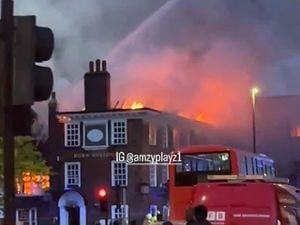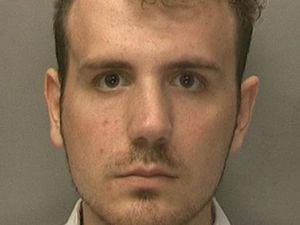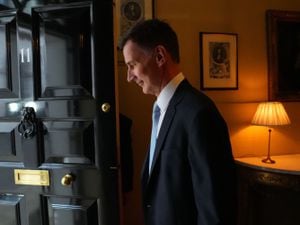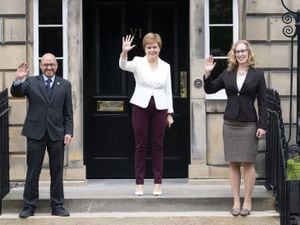Protesters march through London demanding new Brexit referendum
Organisers claimed there was a turnout of around one million, which they said made it one of the biggest protests in British history.
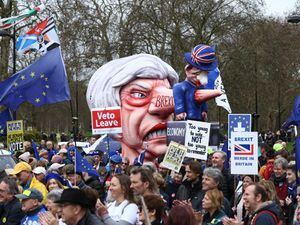
Demonstrators flooded the streets of central London as they marched on Parliament to demand the public are given a final say over Brexit.
Marchers set off from Hyde Park Corner at around midday on Saturday as part of the Put It To The People protest.
Organisers claimed there was a turnout of around one million, which they said made it one of the biggest protests in British history.
Marching bands, music, whistles, chants and cheers provided a noisy backdrop to the march.
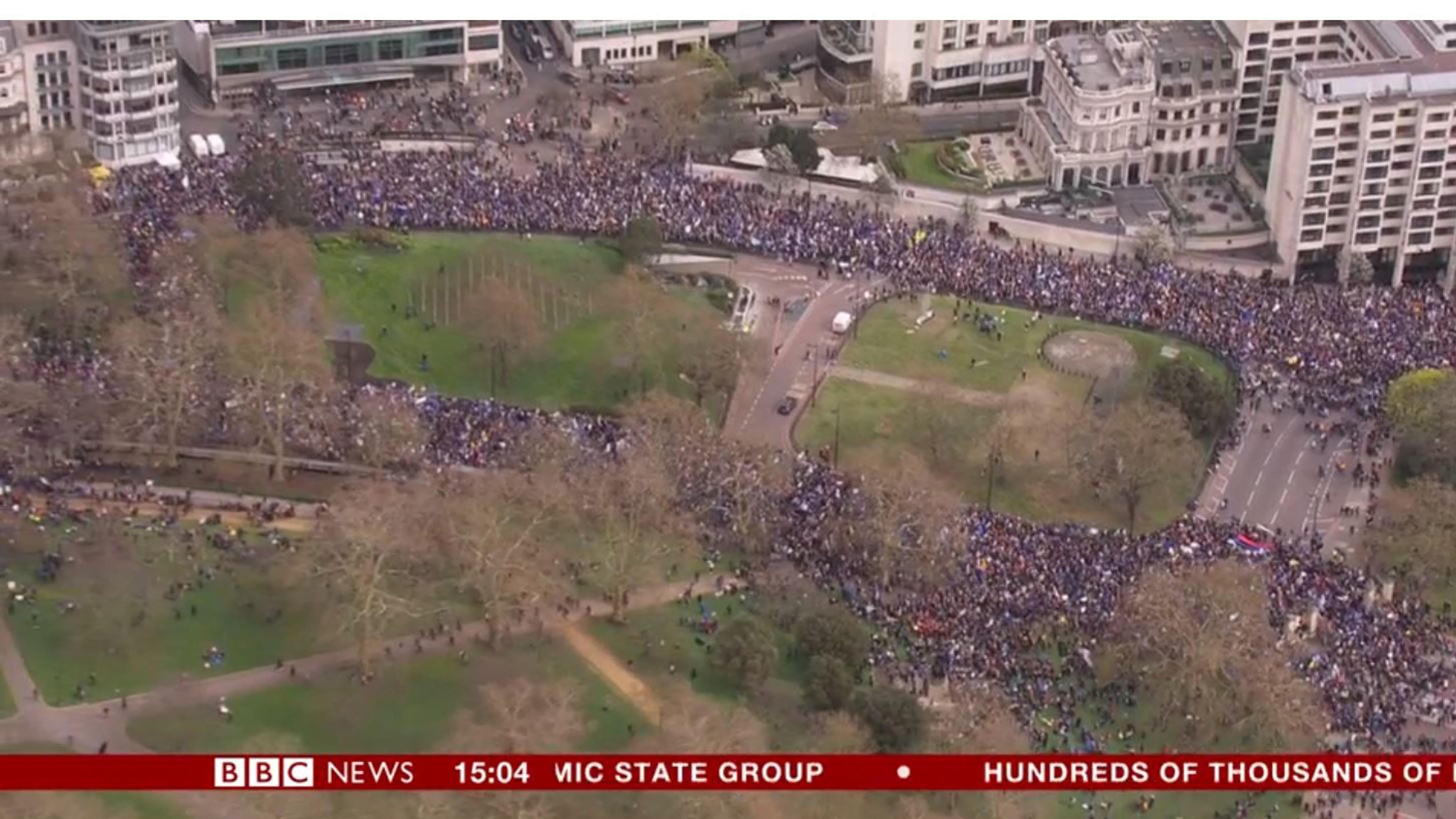
Demonstrators wore blue and yellow berets and flew large EU flags above the crowd as the march slowly made its way to Parliament Square.
Placards bore messages urging the Government to “revoke article 50” and for Brexit to be put to the people.
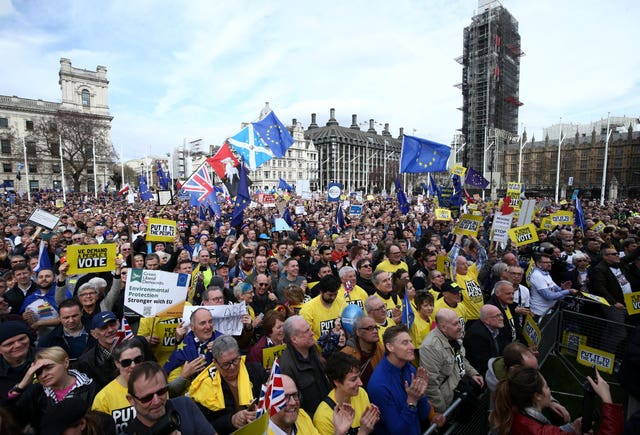
The size of the crowd saw people spill over into the capital’s side streets and some underground trains were not stopping at Green Park station.
Mariella Frostrup and Richard Bacon, who were hosting a rally in Parliament Square, told the crowds an initial count showed the amount of people taking part in the march had topped one million.
The march featured people of all ages who were lead in chants for a “people’s vote”.
Many people wore yellow fluorescent stickers reading “Bollocks to Brexit. It’s not a done deal”.
The day’s activities were kicked off by the unfurling of a large banner on Westminster Bridge that read “Love socialism, hate Brexit”.
The stunt was organised by a group calling itself the “Left Bloc” which is supported by Labour MPs, including Clive Lewis and Kate Osamor, Green Party MP Caroline Lucas, trade unions and grassroots campaigners.
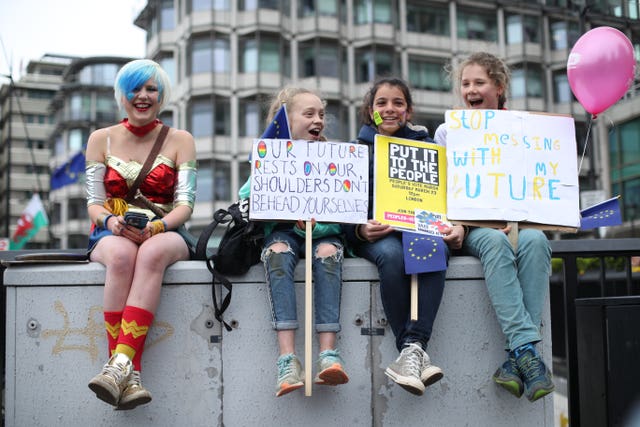
In Parliament Square, Labour’s deputy leader Tom Watson is expected to tell marchers the only way to resolve the Brexit impasse is “for people themselves to sign it off”.
Scottish First Minister Nicola Sturgeon, former deputy prime minister Lord Heseltine and London mayor Sadiq Khan are also expected to take the stage.
Other speakers will include former Conservative cabinet minister Justine Greening and ex-attorney general Dominic Grieve, former Tory turned independent MP Anna Soubry, Lib Dem deputy leader Jo Swinson, Green Party MP Caroline Lucas and SNP Westminster leader Ian Blackford.
Campaigners arrived in the capital from across the country, with one taking on a 715-mile journey on ferries, trains and buses from Orkney in Scotland.
Student Sorcha Kirker, 27, was joined by about 30 other students from the University of the Highlands and Islands.
The London march coincides with pro-Brexit campaigners continuing their long hike from the North East to the capital.
Former Ukip leader Nigel Farage re-joined the March to Leave when it set off from Linby, near Nottingham, on Saturday morning.
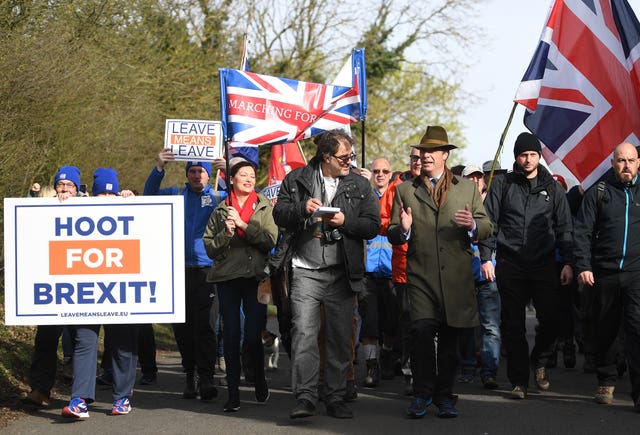
Saturday’s demonstrations follow EU leaders agreeing to delay Brexit to give Prime Minister Theresa May a final chance to get her deal through Parliament.
Leaders agreed to extend Brexit to May 22 if Mrs May can get MPs to back her deal in the Commons at the third time of asking.
If the vote is not passed, the UK will have to set out an alternative way forward by April 12, which could mean a much longer delay – with the UK required to hold elections to the European Parliament – or leaving without a deal at all.
An online petition demanding the Government stops the Brexit process had topped four million signatures by Saturday morning.
It is now the most popular ever submitted to the Parliament website, moving ahead of a 2016 petition calling for a second EU referendum.

